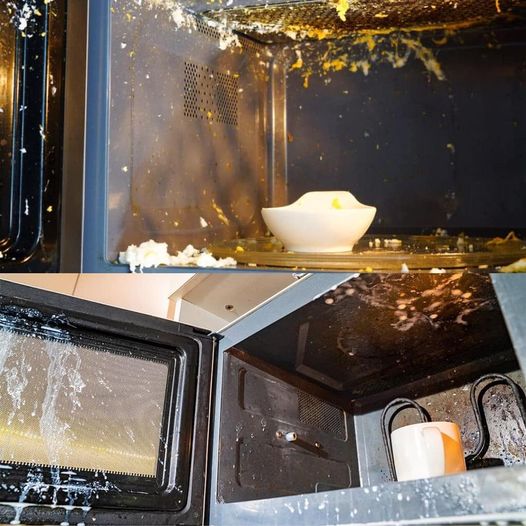ADVERTISEMENT
You don’t use it to peel garlic
Say goodbye to tediously peeling clove after clove of garlic. You can microwave a whole head of garlic for about 20 seconds and the cloves will slip out of their peels effortlessly, without the garlic-scented fingers.
You don’t prepare Sunday breakfast in the microwave
Sunday morning breakfast just got a lot easier and cleaner because you can cook bacon and eggs right in the microwave. Lay bacon between two pieces of paper towel or on a covered plate. Microwave in one-minute intervals until it’s the perfect crispiness; not only does it take less time than the stovetop method, it also saves you a greasy mess. You can also cook scrambled eggs and omelets in a microwave-safe bowl. Zap for about one to two minutes per egg; stir halfway through for scrambled.
You don’t know its wattage
Not all microwaves are created equal, and if you don’t know your model’s wattage you could find yourself in trouble. Many premade meals require a certain wattage to properly heat up the food; following the recommended cook time could still leave you with undercooked and possibly contaminated food if you’re not heating it at the proper wattage, too. Most midsized to large microwaves are typically between 850 and 1,650 watts, while more compact ones tend to be between 600 and 800 watts, according to Consumer Reports. If your oven is smaller than what’s printed on the package, heat your food for a little longer to ensure it’s fully cooked.
You’ve never microwaved potato chips
No, don’t dump a bag of chips in a bowl and shove it in the microwave. Make healthy homemade potato chips without ever turning on your oven or the deep fryer. Slice potatoes or sweet potatoes as thinly as possible (carefully use a mandolin if you have one). Spray with cooking oil or brush with olive oil and arrange them in a single layer on a plate. Sprinkle with a bit of salt (and black pepper if you like spice) and heat uncovered for three minutes, then flip and cook for three more. But don’t grab them just yet! It’s important to let them fully cool, since this is when they crisp up into the crunchy bite you know and love. Here are 16 foods you had no idea you could microwave.
You’re not making microwave lattes
You don’t need a fancy machine to make the perfect latte or cappuccino. Once you brew the espresso on the stove or in a coffeemaker, you can create that creamy finishing foam right in your microwave. Fill a lidded jar about halfway with milk and shake vigorously. Remove the lid and microwave for 30 seconds. Voila! You have warm milk to pour and fluffy foam to scoop on top.
You cover plates with plastic wrap
Covering your food is always a good idea to prevent splattering, but never use plastic wrap; the chemicals from the plastic can get into your food while it cooks. Instead, opt for a moist paper towel to retain moisture or invest in an inexpensive microwave splatter guard, available at most home goods stores.
You don’t toast nuts
Toasting nuts has never been so easy. While traditional methods like in a pan or the oven will do the trick, so will your microwave, in much less time and without the scorching. Lay chopped nuts or coconut flakes in a single layer on a plate. Cook in 30-second increments until they reach your desired color, toastiness, and crunch.
You don’t have a regular cleaning schedule
Even if your microwave looks clean, it almost certainly is not. It’s important to regularly scrub the inside and outside of your oven. This eliminates harmful bacteria from raw meat or fish and removes food particles that can be smelly and also harbor bacteria.
You didn’t know you could make caramel
If you can’t seem to master caramel on the stove (think sticky, burned mess), the microwave is basically foolproof. Pour a can of sweetened condensed milk into a bowl. Cook covered in two-minute intervals, stirring between each one until it’s as caramel-y as you like it. Then indulge.
You defrost meat in its package
Microwaving right in the package might seem like a good way to contain raw meat’s messy and bacteria-laden defrosting juices, but it can actually be more harmful than unwrapping it first. Chemicals from the foam trays meat is sold on and from the plastic packaging can seep into your food as both heat up.
Continued on next page
ADVERTISEMENT
